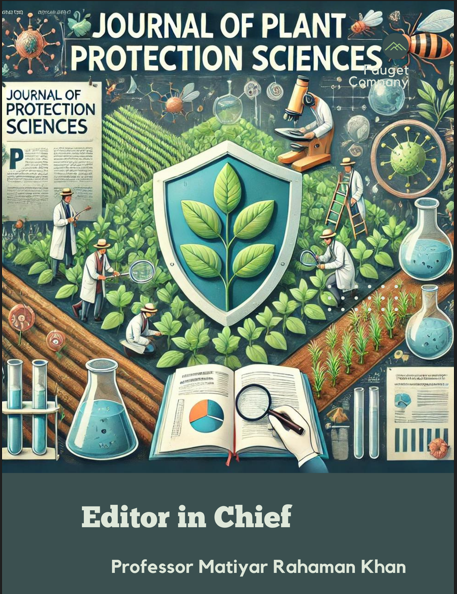Management of causal agents of chilli leaf curl complex through bio-friendly approaches
DOI:
https://doi.org/10.48165/Keywords:
Chilli leaf curl, mite, thrips, diafenthiuron, garlic extractAbstract
Chilli leaf curl causes huge crop loss in Sundarban Islands that occurs primarily due to attack of thrips, yellow mites and white fly followed by invasion of chilli leaf curl virus. An attempt was made to find out the cost effec tive management schedule to minimize the crop loss. Seven treatments were taken up for study including two chemicals i.e. profenophos and diafenthiuron, three ecofriendly approaches i.e. garlic extract, spirit and alternate use of garlic with spirit, one predator insect Chrysoperla carnea and untreated control. The lowest population of thrips, mites and white fly was recorded with application of diafenthiuron at 15 days interval from seedling to early fruiting stage. Among the ecofriendly options, alternate use of garlic with spirit performed better than their single repeated use starting from seedling to early fruiting stage at every 15 days interval.
References
Anonymous. 1994 Administrative Report of the De partment of Agriculture. Department of Agricul ture, Peradeniya, Sri Lanka.
Anonymous. 2011 Annual Action Plan on Agriculture, South 24-Parganas, Department of Agriculture, Government of West Bengal, India.
Biddle AJSH Hutchiins D Whiteman JA. 1992 Pests of leguminous crops, pp. 162-208. In Vegetable Crop Pests. Macmillian Press, Edinburgh, Scotland.
Banerjee MK Kalloo MK. 1987 Sources and inheri tance of resistance to leaf curl virus in Lycopersi con. Theoretical and Applied Genetics 73: 707–10
Fernando HE Peiris JWL. 1957 Investigations on the
chilli leaf curl complex and its control. Tropical Agriculturist 113:305-23.
Gerson U. 1992 Biology and control of broad mite Polyphagotarsonemus latus (Banks) (Tarsonemidae). Experimental and Applied Acarology 13(3): 163-78.
Hosamani A. 2007 Management of chilli murda com plex in irrigated Ecosystem. Ph. D Thesis, Univer sity of Agricultural Sciences, Dharwad, India.
Kaliappan R Rajagopal A. 1970 Effect of salinity on the south Indian field crops: germination and early vigour of chilli (Capsicum annuum Linn.). Madras Agricultural Journal 57(4): 231-33.
Karmakar K. 1995. Comparative symptomology of chilli leaf curl disease and biology of tarsonemid mite, Polyphagotarsonemus latus (Tarsonemidae). Annals of Entomology 13(2): 65-70.
Mondal B Mondal P. 2012 Ecofriendly pest manage ment practices for leaf curl complex of chilli (Capsicum annuum L.). Journal of Biopesticides 5 (Suppl): 115-18.
Lewis T. 1973 Thrips: Their Biology, Ecology and Economic Importance. Academic Press London, pp. 36-44.
Peiris JWL. 1953 Chilli leaf curl complex. Tropical Agriculturist 109:1-4.

